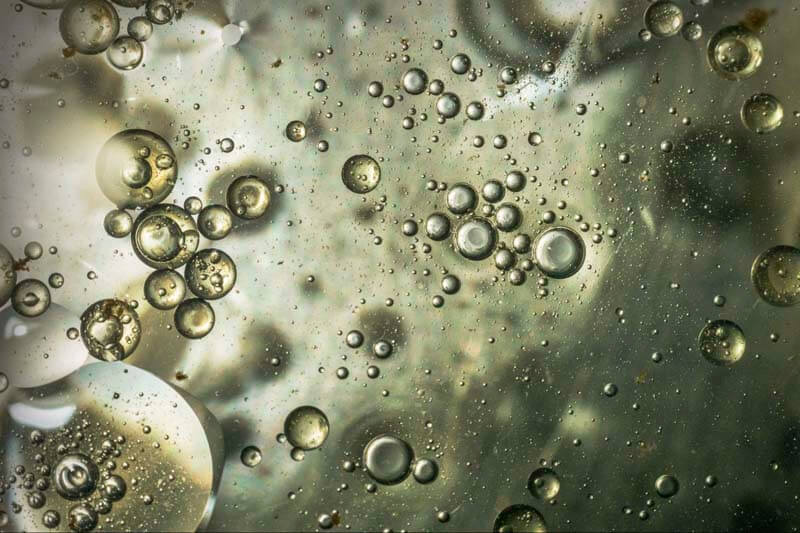
Since water is the largest component of brewing beer, it’s important to understand the chemistry behind it. And what you can do, as a brewer, to make sure it’s the best grade possible.
According to Precision Fermentation’s report called “Water Chemistry for Brewers,” “by understanding the way water chemistry impacts the sensory quality of finished beer, and by analyzing fermentation and other data, brewers can control sensory aspects of their brews like never before.”
By applying water chemistry to measure the chemical characteristics of various water types, you’ll be able to adjust the water you use to elevate a good beer to a great beer.
So slip into your lab coat and best brewing boots! We’re giving you a breakdown of the chemistry of water, how minerals/ions build your beer, as well as how to determine your ideal water type for your next brew.
What We’ll Cover in This Piece:
Why Water Chemistry Matters to a Brewer
Because beer is ninety to ninety-five percent water! Since water is a key component of beer, it’s incredibly important to first understand your water source and type.
Just like any chef will tell you, knowing where your ingredients come from affects how you’ll prepare a specific dish from cooking to seasoning. You can’t make a great dish from subpar ingredients. Similarly, you can’t brew a great beer with below-average water.
So, let’s dive into the specifics of water chemistry to understand how it can help you brew a better beer.
The Two Different Types of Water
According to USGS, water is known as the “universal solvent” because it dissolves more substances than any other liquid. Meaning that, wherever water flows through, it absorbs minerals, chemicals, and nutrients.
As it interacts with sediment, rocks, and soil, water picks up minerals. As those minerals break down, they become a variety of either positive or negative ions. (We’ll cover more on ions further down.) It’s that hardness and mineral makeup of the water that affect the flavor and yeast fermentation process.
It may be harder to see, but just like there are different types of hops, malts, and yeast that contribute to your recipe, there are two different types of water that can have an effect on your final beer.
When considering water sources and profile, brewers have two options:
Surface Water
Surface water refers to visible bodies of water: rivers, lakes, streams, etc. Rivers provide the vast majority of the surface water that people utilize. Surface water is typically high in organic material and low in dissolved minerals.
Groundwater
Water from underground aquifers. Groundwater is typically low in organic material and high in dissolved minerals.
One Step Further: For extra peace of mind, reach out to your local water treatment plant and request a water report. This will ensure that you know exactly which additives you’re working with and also the alkalinity and hardness of your water.
Different beer styles benefit from different water profiles. If you’re looking to start building out your most perfectly balanced water profile, this reference guide provides a handy summary and even includes built-in target water profiles as well as a brewing water and mash chemistry calculator.
Similarly, Precision Fermentation put together a report on Water Chemistry for Brewers that breaks down the preferred water profiles based on beer styles.
Identifying Ions and Minerals

Photo by Manki Kim on Unsplash
Welcome to your chemistry spice rack. Here, instead of your typical garlic powder and pepper, your seasonings are chloride and bicarbonate. Different ”seasonings,” also known as ions in the world of water chemistry, help create the unique flavor profiles of your beer.
As defined by Merriam-Webster (and your high school chemistry professor), an ion is:
This is important to understand because, when it comes to making beer, the cation (positive) and anion (negative) parts of the minerals dissolved in the water are the ions in brewing water.
Ions contribute to everything including water hardness, clarity, flavor, mash pH, minearlity, alkalinity, and attributes like dryness and crispness.
The Three Cations to Identify Are:
Cations (+)
Calcium (Ca+2)
This is the principle ion that contributes to water hardness. Other features include:
- Ranges 50-150 ppm
- Affects the water’s hardness
- Assists in enzymatic reactions in mash pH
- Aids in beer clarification
- Enhances the finished beer’s clarity, flavor, and stability
- Prevents “gushing”
Magnesium (Mg+2)
Although not as influential as Calcium, Magnesium contributes to hardness and mash pH. Other features include:
- Ranges 10-30 ppm
- Contributes to hardness and decreases the mash pH
- Adding more than 30+ will create a more sour, bitter profile
Sodium (Na+1)
In large concentrations this cation creates a mineral or metallic taste in beer. Other features include:
- Ranges 0-40 ppm
- Creates a salty flavor in the beer when combined with chloride
- Has no impact on the hardness of the water
- Gives beer a metallic or mineral taste
- Balances the malt flavors
The Three Anions to Identify Are:
Anions (-)
Carbonate (CO3-2)
Has a huge factor in total alkalinity. Other features include:
- Ranges 0-250 ppm
- Plays a major role in the chemistry of brewing water
- Raises the pH of the mash and beer while determining the total alkalinity of the water
Sulfate (SO4)
Makes beers drier and crisper. Other features include:
- Ranges 50-350 ppm
- Higher ppm brings out the dry bitterness of the hops to give the beer a more crisp taste
- It is semialkaline, but it does not add to the overall alkalinity
Chloride (CI)
The opposite of Sulfate, Chloride contributes to a bigger-bodied, sweet beer. Other features include:
- Ranges 0-200 ppm
- Gives the beer a richer flavor as well as improves the clarity
It’s this duality of sulfate-to-chloride that affects a beer’s body. According to an article called “Brewing Water” from Craft Beer & Brewing, “a sulfate-to-chloride ratio of 2:1 or higher will tend to give the beer a drier, more assertive hop balance, while a beer with a ratio of 1:2 will tend to have a less bitter, rounder, and maltier balance.”
To use the chef analogy again, just like spices can alter but not define a dish, the amounts of sulfate and chloride can enliven or temper a beer, but they won’t cover up flaws.
How to Find the Perfect pH of Beer

Photo by Adolfo Félix on Unsplash
The reason pH is so significant to the science behind delicious-tasting beer is because the pH of the water encourages yeast growth and boosts enzyme activity in the mash during the fermentation phase.
According to USGS, pH is “a measure of how acidic/basic water is. The range goes from 0-14, with 7 being neutral. pHs of less than 7 indicate acidity, whereas a pH of greater than 7 indicates a base. pH is really a measure of the relative amount of free hydrogen and hydroxyl ions in the water. Water that has more free hydrogen ions is acidic, whereas water that has more free hydroxyl ions is basic.”
When it comes to brewing, the ideal mash pH for most beers is around 5.4. The pH of the mash impacts both the flavor and clarity of the finished product. So, too much acidity in the pH might result in unpleasant flavors and hazy beer.
While a low pH can cause a beer to be stripped of its depth and complexity.
For example: On that acidic range from 0-14, with a reading of 7 being a neutral base, lemon juice has a pH of 2 while baking soda has a pH of 9. For most beers, you probably don’t want a super acidic beer or one that tastes like baking soda. Mostly, brewers are looking for that happy medium right in the middle.
Use litmus paper for a fast and effective way to find a rough pH reading. The paper will change colors at a certain level to help you understand the pH value of the water.
All About Alkalinity

Photo by Hans Reniers on Unsplash
You can’t talk about pH without mentioning its buffer—alkalinity. Otherwise known as when a solution’s capacity can withstand a drop in pH when acids are introduced.
Alkalinity ensures that the beer retains its excellent flavor by eliminating sourness and unwanted tannins. Typically, brewers are looking for a wort with a low-to-moderate alkalinity (for reference, a high alkalinity is typically a calcium carbonate over 100 ppm), but as is the case with any recipe, it all depends on the style of beer you’re trying to brew.
The three key ions that contribute to alkalinity are: hydroxide, carbonate, and bicarbonate. “In water, they react with acidic substances to form salts,” writes Craft Beer and Brewing. “Alkalinity ions are thus acid reducers; they increase water’s pH value. Depending on the suitability of a given brewing water for a particular beer style, a brewer may use water additives to change the water’s pH in the direction of more acidity or more alkalinity.”
Here are a few ways brewers can adjust their alkalinity if needed:
Reducing alkalinity
Reducing alkalinity is the most frequent alkalinity modification that brewers want to make. Reverse osmosis, dilution, or adding a taste-neutral acid are just a few options.
- A good way to reduce the amount of alkalinity is by boiling your brewing water down to between 60 to 90 ppm.
- Or you can add chalk to the water to help the bicarbonates in the solution precipitate.
Adding alkalinity
Adding alkalinity is useful when brewing darker beers. When creating a recipe that calls for more roasted grains and/or crystal malts or when utilizing reverse osmosis water, it is time to start thinking about how to deal with very low residual alkalinity. There are typically two ways to accomplish this.
- The crystal malts and roasted grains can be set aside for the majority of the mash and added at the beginning of lautering.
- The second step consists of adding alkalinity to the mash in the form of baking soda or pickling lime.
How About Hardness?
When it boils down to it, there are two different types of water hardness: hard and soft.
Hard Water
Hard water contains higher amounts of calcium and magnesium.
Soft Water
Soft Water contains lower amounts.
The type of water hardness or softness really depends on the style of beer you’re trying to brew. For instance, pilsners come from the town of Pilsen in the Czech Republic, which is known for its unique soft water.
On the other hand, hard water has dual roles in protecting the mineral content from oxidizing and also improving clarity of the beer. That’s what makes it ideal for brewing darker beers like stouts or the dunkel style. The science behind this is because the pH level of hard water is closer to the required range for colored malts.
One can regulate water hardness in a couple different ways. For example, creating a harder beer can really be as simple as just adding one of the following to your water: calcium, magnesium chloride, calcium sulfate, calcium carbonate, or magnesium sulfate (Epsom salt).
Reducing hardness is a bit more difficult but still achievable through either pre-boiling, a distilled or reverse osmosis water dilution, or the addition of pickling lime.
Clean Equipment Produces Better Beer

Photo by Roberta keiko Kitahara Santana on Unsplash
Since brewing beer is a giant chemistry experiment, it is incredibly important that the environment and equipment be probably sanitized and cleaned.
In fact, there’s a common belief in the industry that brewing is ninety percent cleaning and ten percent actually brewing. Compare your current cleaning operations to our own 6 Ways to Maintain a Clean and Sanitized Brewery.
Other Content You May Enjoy
To succeed and grow your restaurant, bar, or brewery you need to stand out in local search results. Whether someone is searching for the “best craft beer near me” or “top-rated seafood restaurant in [your city],” Local SEO (Search Engine Optimization) helps your business appear at the top of those search results.
With 81% of consumers using Google Search and Maps to find local businesses, and nearly 90% of customers choosing a business on the first page of search results, optimizing your online presence is essential.
This guide will walk you through Local SEO strategies tailored for restaurants, bars, and breweries, covering Google My Business, website optimization, online reviews, local backlinks, and more.
By the end of this guide, you’ll have a step-by-step action plan to increase your search rankings, attract more local customers, and grow your business.
In today’s digital world, having a well-designed, functional website is essential for restaurants, bars, and breweries. It goes beyond having social media. A great website can help attract new customers, showcase menus, accept reservations, and even drive online sales. But one of the most common questions business owners ask is: How much should a website cost in 2025?
The answer depends on several factors, including the type of website, features, complexity, and whether you choose a DIY solution or hire a professional web developer. Costs can range from a few hundred dollars for a basic website to tens of thousands for a fully customized, feature-rich platform.
This guide will break down website costs for restaurants, bars, and breweries, helping you understand the pricing landscape and choose the best solution for your business
Trivia nights have become an incredible marketing strategy for bars, restaurants, and breweries to draw in crowds and engage with new customers. With the recent collaboration between Geeks Who Drink, Timeplay, and the iconic television show Jeopardy!, businesses now have an exciting opportunity to host the Jeopardy! Bar League. This partnership combines the global brand recognition of Jeopardy! with Timeplay’s cutting-edge technology and the fun of live trivia from the experts at Geeks Who Drink.
In this piece we’ll cover what this new collaboration between these two trivia powerhouses is and how you can bring this unique experience to your venue.
In today’s world, both websites and social media platforms are crucial for a brewery, bar, or restaurant’s online presence. However, consumer habits show distinct preferences for each, depending on the context of their search or interaction.
In this guide, we’ll go over the basics, walk you through how to leverage these tools effectively, and show you how understanding these trends can help your venue better meet your customers’ expectations.
As a restaurant, bar, brewery, or any venue with a food and beverage program, having a modern, functional, and aesthetically pleasing website isn’t just a luxury—it’s a necessity.
No matter the size of your business, your new potential customers often interact with your website first—and first impressions matter.
In this piece, we’ll explore the top website trends shaping the online presence of hospitality businesses in 2025. These trends will help your venue stand out and attract more customers while creating a unique and modern experience to establish the perfect guest experience from start to finish.
For bar owners, hospitality managers, and small business owners, selecting the right gin brands is more than just filling the shelves—it’s about curating a distinctive customer experience. Gin has soared in popularity, becoming a staple of modern cocktail culture. With its complex botanical infusions, gin offers versatile, memorable flavors that can attract a wide range of customers. But with so many choices available, which brands should you prioritize to bring out the best in your gin menu?
This guide explores the seven best gin brands that have proven themselves through quality, craftsmanship, and unique flavor profiles. By understanding what makes each brand special, you and your staff will be better equipped to create a standout gin selection that delights your patrons, reinforces your brand’s reputation with a robust gin drinks menu, and helps you continue crafting classic and innovative gin cocktails.

